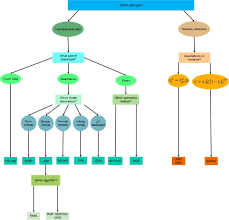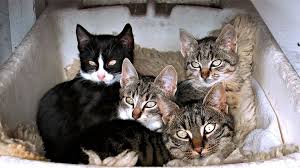This article addresses the quantification of genetic influence on phenotypic traits in animals. Phenotypes are directly observable and measurable, and hereditary factors are inferred when offspring resemble their parents.
Despite advancements, direct correlation between genotype and most phenotypic traits remains challenging due to their polygenic nature.
A crucial aspect of parent-offspring resemblance is heritability. While often used to distinguish genetic and environmental contributions to traits, heritability is a statistical measure rather than a strict determinant.
This article explores the definition, estimation, and significance of heritability in animal breeding. Key principles guiding this discussion include:
i. Heritability depends on both genetic and environmental variances.**
ii. Heritability is a population-specific property.
iii. Closely related populations can exhibit different heritability values.
Read Also: The Alfalfa Petals: Economic Importance, Uses, and By-Products
Importance Of Heritability in Breeding Programs

Understanding the genetic contribution to trait variability is essential for designing effective breeding programs. Heritability represents the proportion of parental superiority transmitted to offspring. Expressed as a percentage (0–100%) or proportion (0.0–1.0), extreme values are rare in practice.
Heritability influences selection response, as traits with high heritability, such as body weight and birth weight, are more easily improved through selection compared to low-heritability traits like fertility.
The term h² denotes heritability, and phenotypic variation arises from both genetic and environmental factors. Using variance notation:
σ²P = σ²G + σ²E
where:
σ²P = phenotypic variance
σ²G = genetic variance
σ²E = environmental variance
Genetic variance consists of additive (A), dominant (D), and epistatic (I) components, while environmental variance includes general (Eg) and specific (Es) effects. The equation expands as:
σ²P = σ²A + σ²D + σ²I + σ²Eg + σ²Es
The additive genetic variance (σ²A) is crucial in breeding, as it represents the portion of variance transmitted across generations.
Mathematical Definition of Heritability
Heritability is a ratio rather than an absolute value, meaning a decrease in other variance sources increases h². It is defined in two ways:
i. Broad-sense heritability: the proportion of genetic variance (σ²G) to total phenotypic variance (σ²P):
h² = σ²G / σ²P
ii. Narrow-sense heritability: the ratio of additive genetic variance (σ²A) to phenotypic variance (σ²P):
h² = σ²A / σ²P
Selection progress depends on the proportion of additive genetic variance in the total phenotypic variance.
Properties of Heritability
i. If phenotypic variability is entirely genetic (e.g., blood type), h² = 1.
ii. If phenotypic variability is purely environmental, h² = 0.
iii. If genetic variance accounts for 50% of phenotypic variability, h² = 0.5 or 50%.
iv. If environmental variance is three times greater than genetic variance, h² = 0.25 or 25%.
Read Also: Various Types Of Fruits And Their Nutritional Value
Methods of Estimating Heritability

Heritability estimation is fundamental in animal breeding research, particularly for economically significant traits. The most common methods include:
1. Parent-Offspring Regressio
If records exist for a trait (e.g., growth rate) in both parents and offspring, regression analysis estimates h². Regression coefficient (b) is calculated using:
b = σxy / σ²x
where:
σxy = covariance between parent and offspring records
σ²x = variance in parent recordsi. Regression on a single parent estimates half of h², so h² = 2b.
ii. Regression on mid-parents directly estimates h², so h² = b.
2. Half-Sib Correlation Method:
Compares resemblance between paternal or maternal half-siblings.
3. Paternal half-sib correlation is preferred due to:
i. Larger sample sizes for paternal half-sibs.
ii. Elimination of maternal effects.
iii. Heritability is estimated using intra-class correlation (t):
t = σ²s / (σ²s + σ²w)
where:
σ²s = sire variance
σ²w = within-sire varianceiv. Heritability is calculated as h² = 4t.
Full-sib correlations are rarely used due to confounding maternal effects, and identical twin data are also limited in this regard.
Heritability is a fundamental concept in animal breeding, quantifying the fraction of phenotypic traits inherited from parents. Selection efficiency depends on heritability estimates, influencing breeding decisions.
Among various estimation methods, parent-offspring regression and paternal half-sib correlations are widely used for evaluating heritability in farm animals.
Do you have any questions, suggestions, or contributions? If so, please feel free to use the comment box below to share your thoughts. We also encourage you to kindly share this information with others who might benefit from it. Since we can’t reach everyone at once, we truly appreciate your help in spreading the word. Thank you so much for your support and for sharing!

